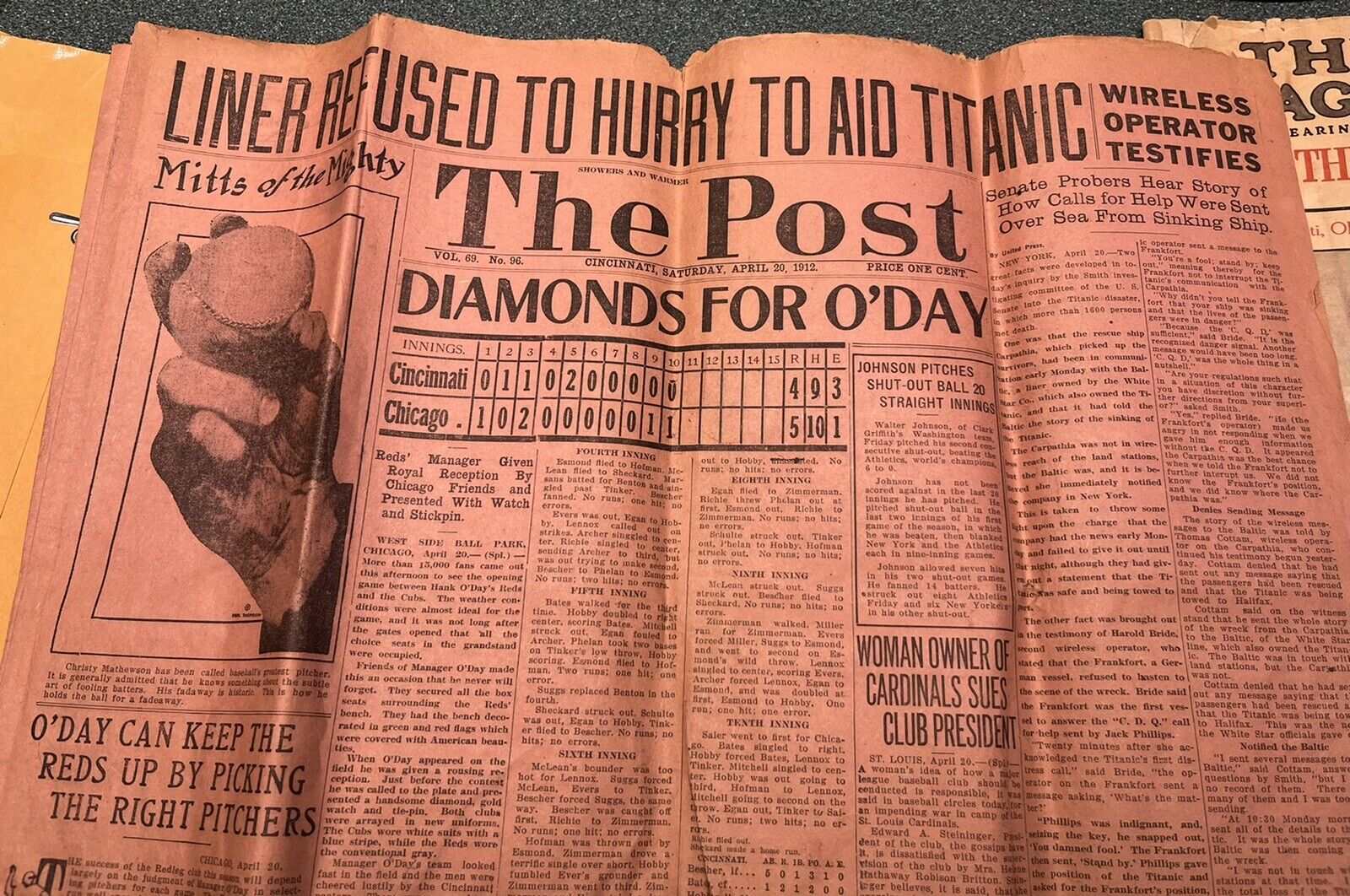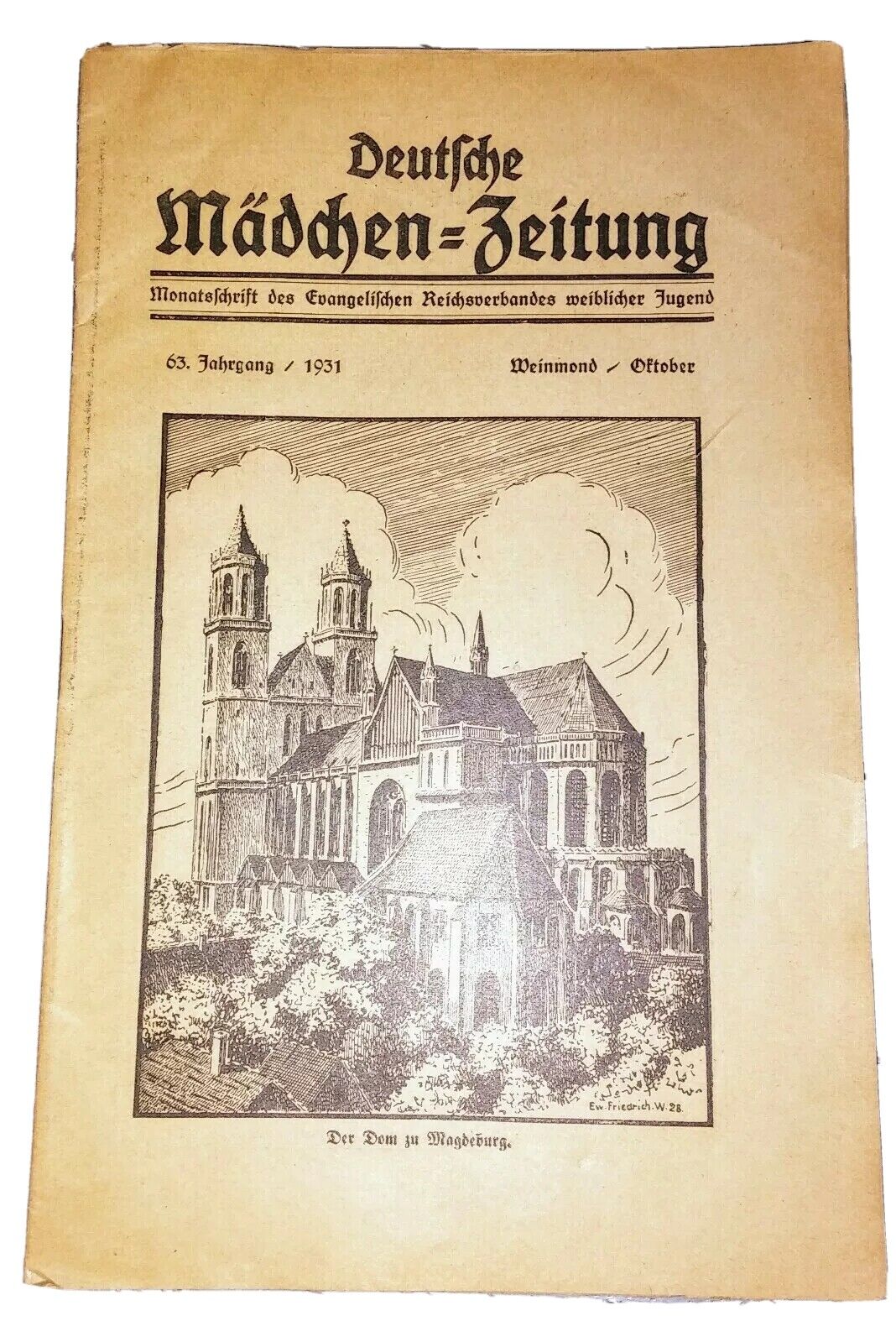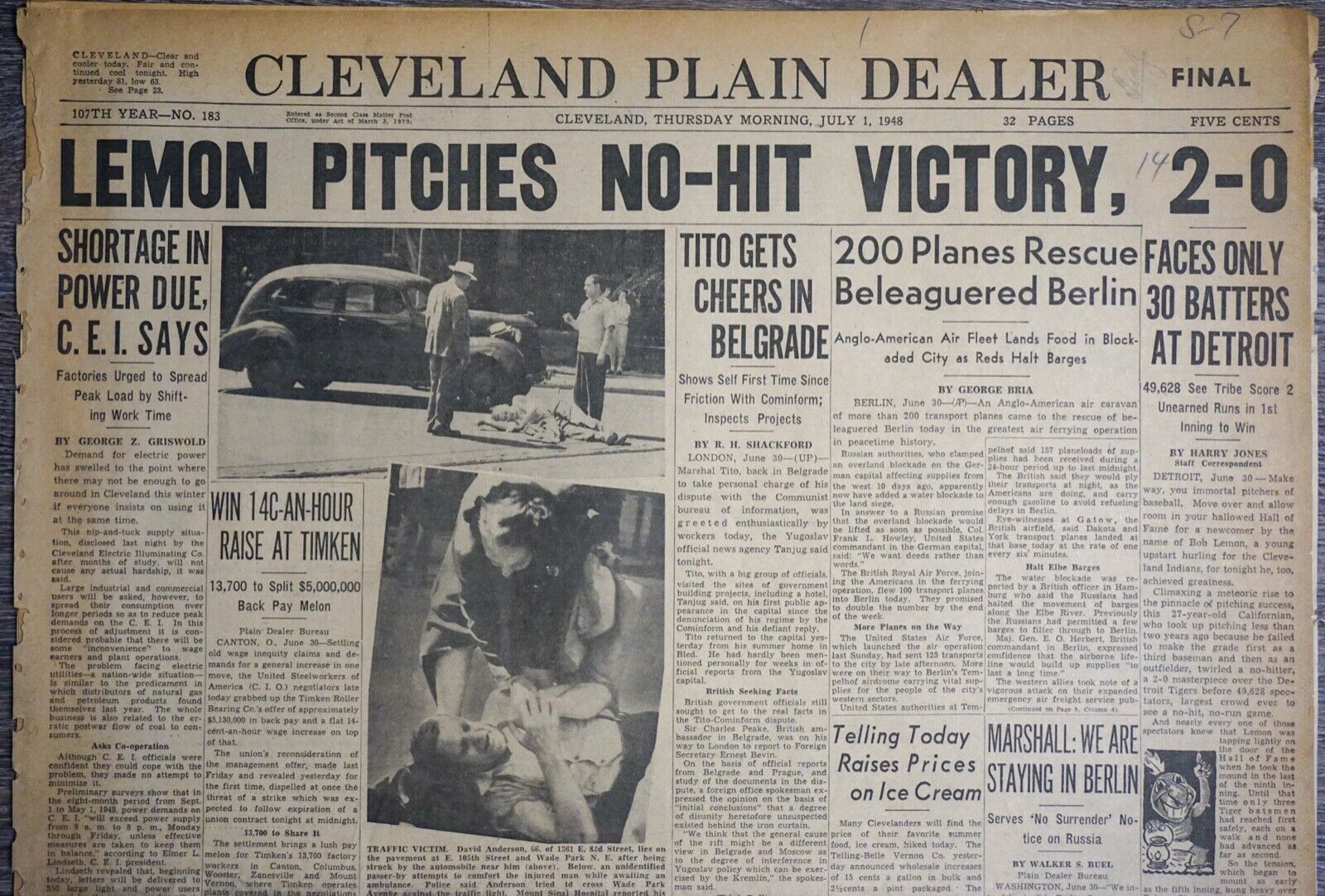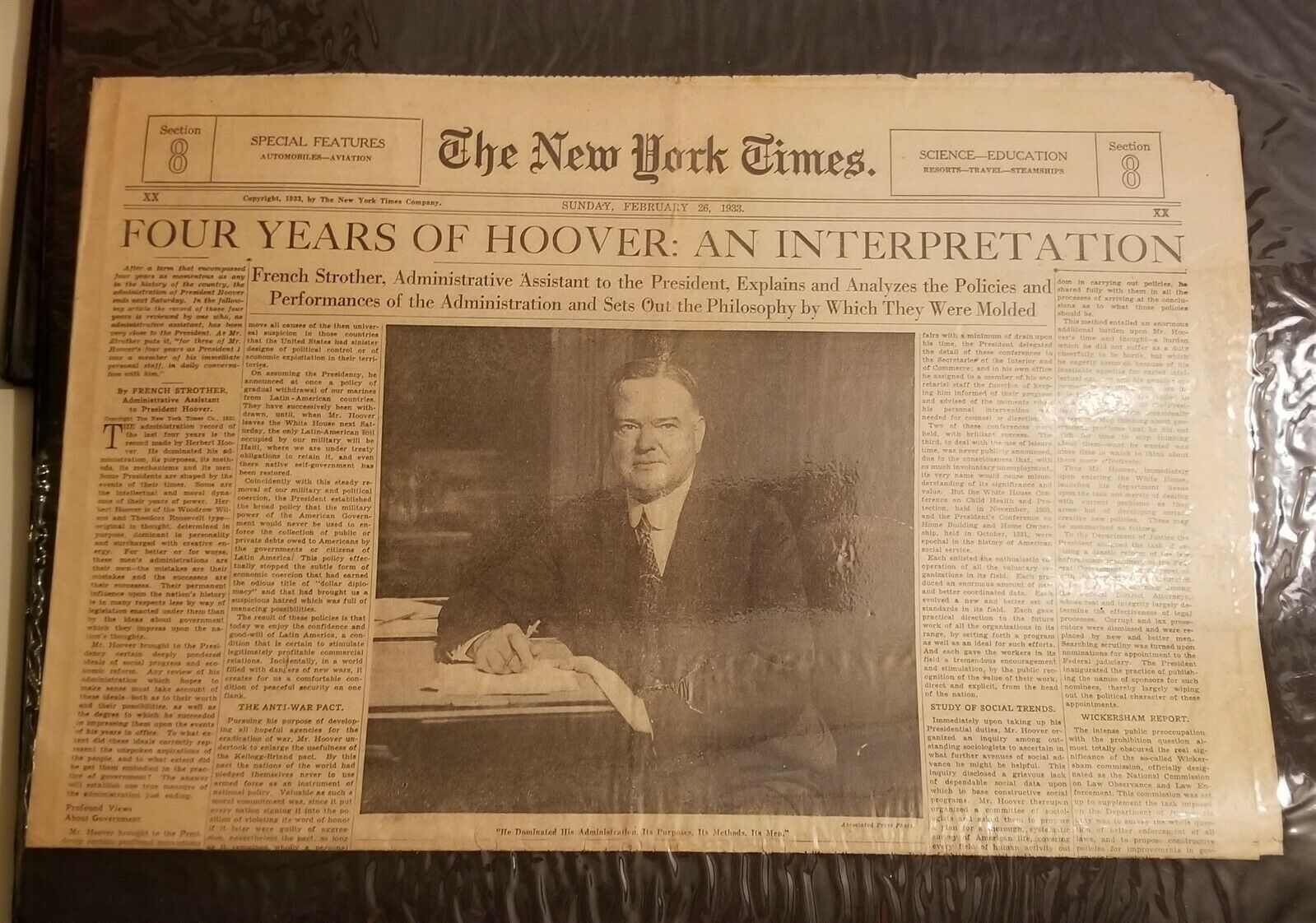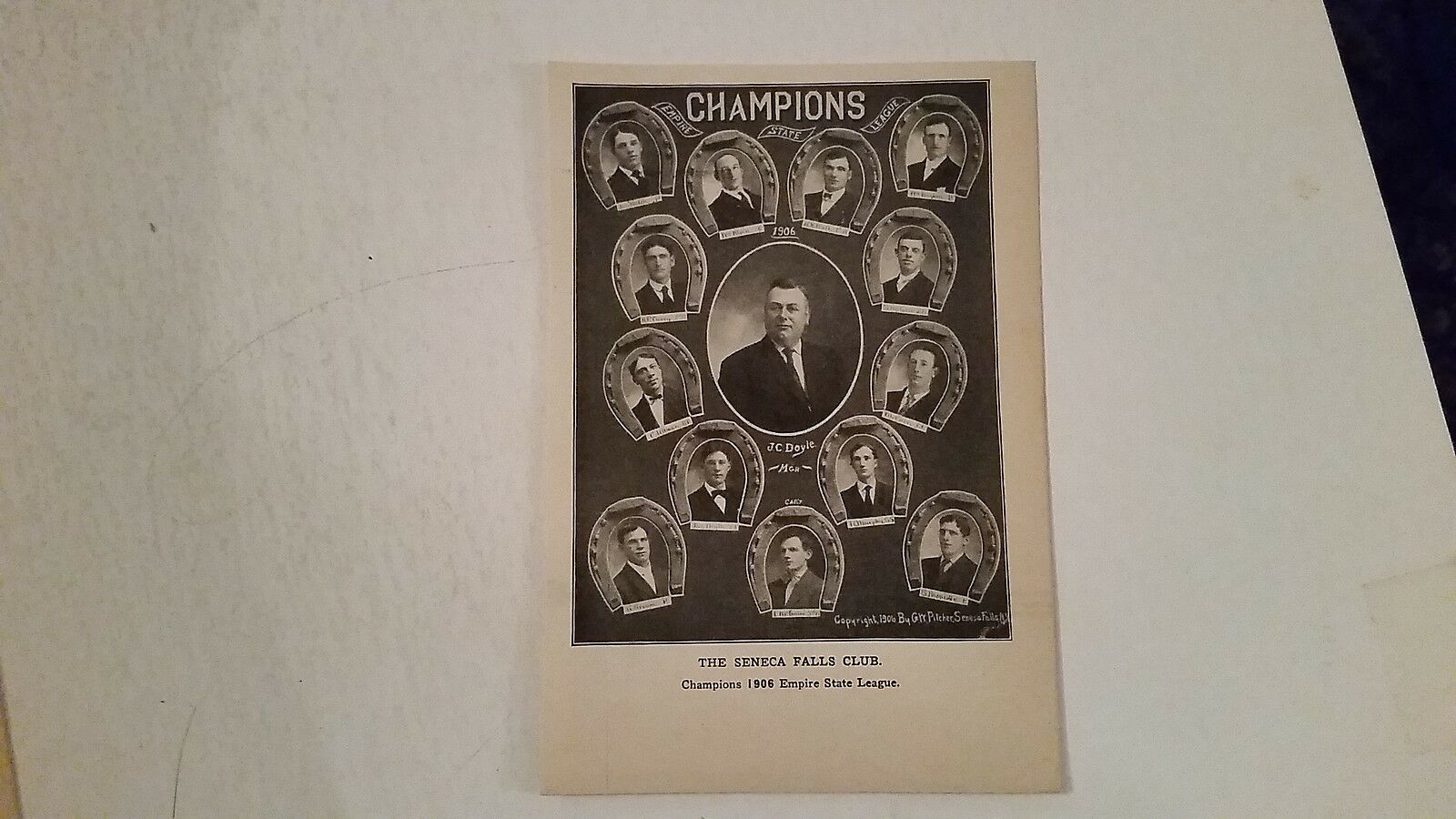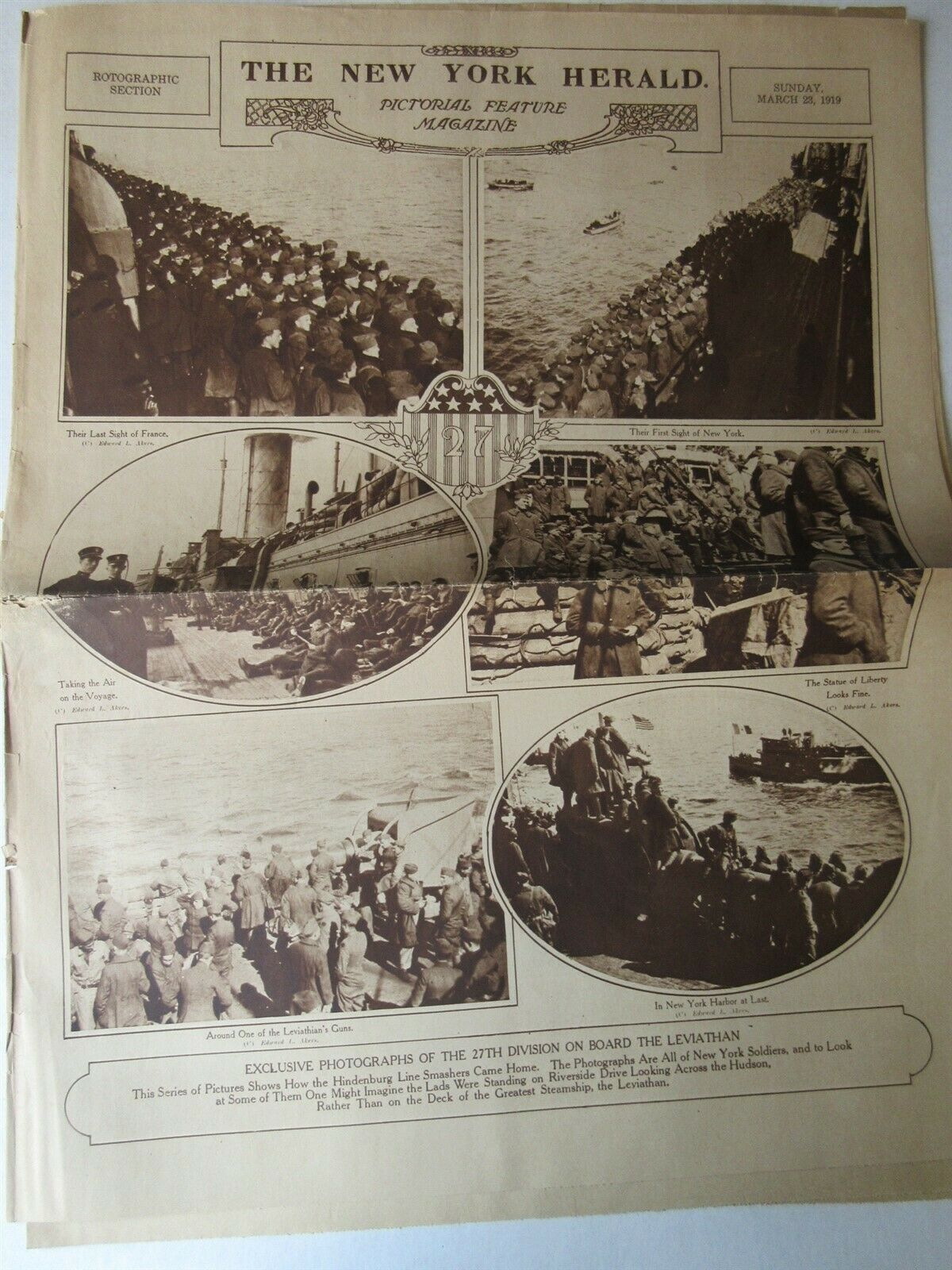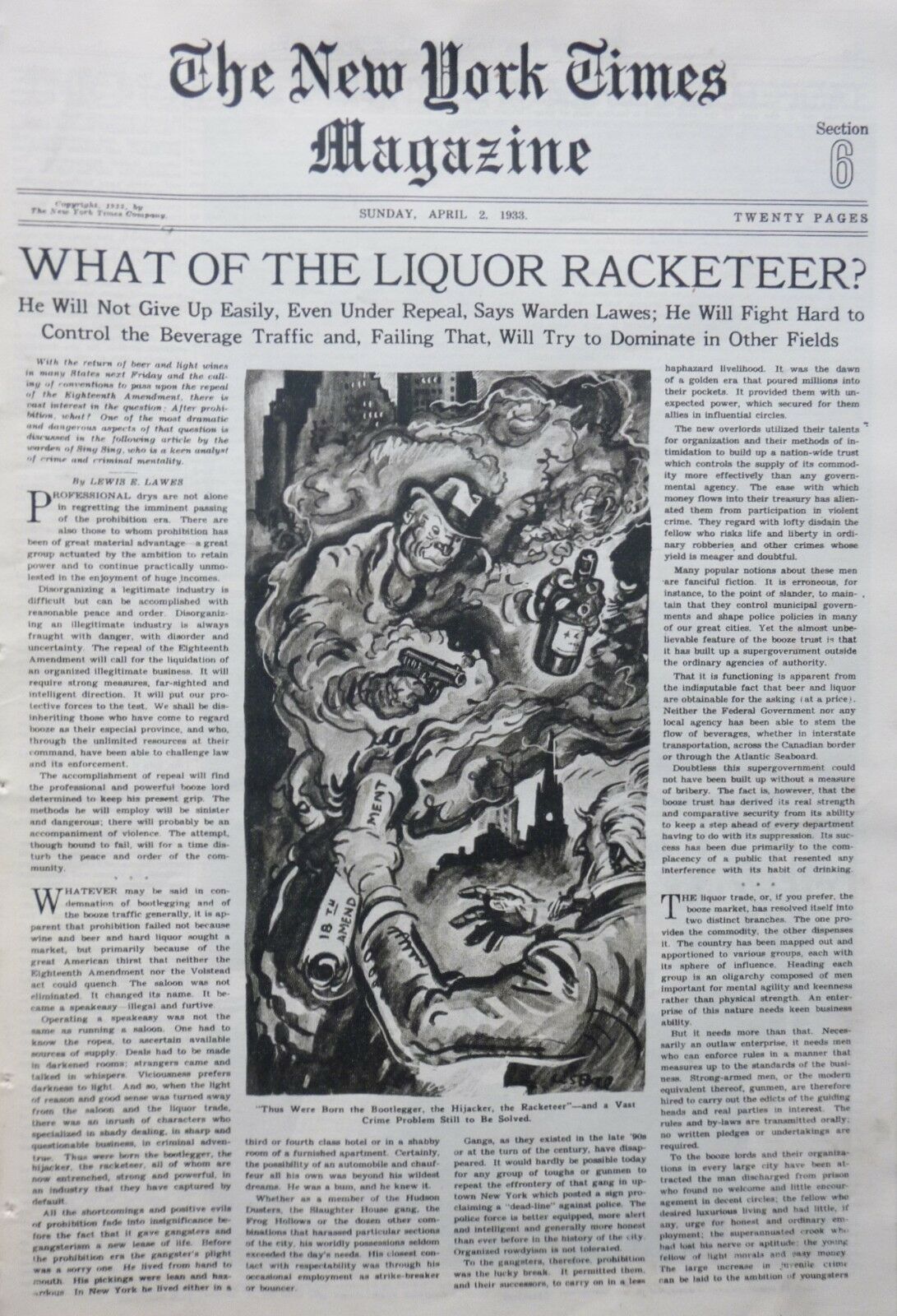-40%
1915 Paris FRANCE English language newspaper with "phantom" AD for RMS LUSITANIA
$ 5.28
- Description
- Size Guide
Description
1915 Paris FRANCE English language newspaper with a "phantom" AD for the return voyage of the ill fated ocean liner, the CUNARD LINE'sRMS LUSITANIA
-
inv # 8I-31714
Please visit our EBAY STORE for THOUSANDS of HISTORICAL NEWSPAPERS on sale or at auction.
SEE PHOTO----- COMPLETE, ORIGINAL English language NEWSPAPER, the
New York Herald
(European International Edition published in Paris, FRANCE) dated in April, 1915.
This newspaper contains an inside page display ad for the CUNARD LINE and shows the
RMS LUSTANIA
to be scheduled to return from Liverpool, England to New York on May 15, 1915
.
Of course, this would prove to be a so-called "phantom" ad after the
RMS Lusitania
passenger ocean liner was sunk by a
German WW I submarine
torpedo just 2 weeks later later on May 7, 1915 while on its way from New York to Liverpool, ENGLAND.
RMS Lusitania was a British ocean liner and briefly the world's largest passenger ship. The ship was sunk on 7 May 1915 by a German U-boat 11 mi off the southern coast of Ireland. The sinking presaged the United States declaration of war on Germany in 1917.
On 17 April 1915, Lusitania left Liverpool on her 201st transatlantic voyage, arriving in New York on 24 April, 1915. It was scheduled to return to Liverpool on May 8, 1915 and then travel back to NY on May 15.
It never made Liverpool as it was torpedoed on May 7, 1915 by a German WW I submarine.
The ship was a holder of the Blue Riband and was briefly the world's largest passenger ship until the completion of her sister ship Mauretania. The Cunard Line launched Lusitania in 1906, at a time of fierce competition for the North Atlantic trade. She made a total of 202 trans-Atlantic crossings.
German shipping lines were aggressive competitors in the transatlantic trade, and Cunard responded by trying to outdo them in speed, capacity, and luxury. Both Lusitania and Mauretania were fitted with revolutionary new turbine engines that enabled them to maintain a service speed of 25 knots (46 km/h; 29 mph). They were equipped with lifts, wireless telegraph, and electric light, and provided 50% more passenger space than any other ship; the first class decks were noted for their sumptuous furnishings.
The Royal Navy had blockaded Germany at the start of World War I. When RMS Lusitania left New York for Britain on 1 May 1915, German submarine warfare was intensifying in the Atlantic. Germany had declared the seas around the United Kingdom a war zone, and the German embassy in the United States had placed a newspaper advertisement warning people of the dangers of sailing on Lusitania.
On the afternoon of 7 May, a German U-boat torpedoed Lusitania, 11 mi off the southern coast of Ireland and inside the declared war zone. A second, unexplained, internal explosion sent her to the seabed in 18 minutes, with the deaths of 1,198 passengers, including almost a hundred children, and crew.
Because the Germans sank, without warning, what was officially a non-military ship, many accused them of breaching the internationally recognised Cruiser Rules. It was no longer possible for submarines to give warning due to the British introduction of Q-ships in 1915 with concealed deck guns. (Lusitania had been fitted with 6-inch gun mounts in 1913, although she was unarmed at the time of her sinking.)
The Germans justified treating Lusitania as a naval vessel because she was carrying hundreds of tons of war munitions, therefore making her a legitimate military target, and argued that British merchant ships had violated the Cruiser Rules from the very beginning of the war. The Cruiser Rules were obsolete by 1915. RMS Lusitania was regularly transporting war munitions, she operated under the control of the Admiralty, she could be converted into an armed auxiliary cruiser to join the war, her identity had been disguised and she flew no flags. She was a non-neutral vessel in a declared war zone, with orders to evade capture and ram challenging submarines.
The sinking caused a storm of protest in the United States because 128 American citizens were among the dead. The sinking helped shift public opinion in the United States against Germany and was a factor in the United States' declaration of war nearly two years later. After World War I, successive British governments maintained that there were no munitions on board Lusitania, and the Germans were not justified in treating the ship as a naval vessel. In 1982, the head of the British Foreign Office's North America department admitted that there is a large amount of ammunition in the wreck, some of which is highly dangerous and poses a safety risk to salvage teams.
Very good condition. This listing includes the complete entire original newspaper, NOT just a clipping or a page of it. STEPHEN A. GOLDMAN HISTORICAL NEWSPAPERS stands behind all of the items that we sell with a no questions asked, money back guarantee. Every item we sell is an original newspaper printed on the date indicated at the beginning of its description. U.S. buyers pay priority mail postage which includes waterproof plastic and a heavy cardboard flat to protect your purchase from damage in the mail. International postage is quoted when we are informed as to where the package is to be sent. We do combine postage (to reduce postage costs) for multiple purchases sent in the same package.
We list thousands of rare newspapers with dates from 1570 through 2004 on Ebay each week. This is truly SIX CENTURIES OF HISTORY that YOU CAN OWN!
Stephen A. Goldman Historical Newspapers has been in the business of buying and selling historical newspapers for over 45 years. Dr. Goldman is a consultant to the Freedom Forum Newseum and a member of the American Antiquarian Society. You can buy with confidence from us, knowing that we stand behind all of our historical items with a 100% money back guarantee. Let our 45+ years of experience work for YOU ! We have hundreds of thousands of historical newspapers (and their very early precursors) for sale.


